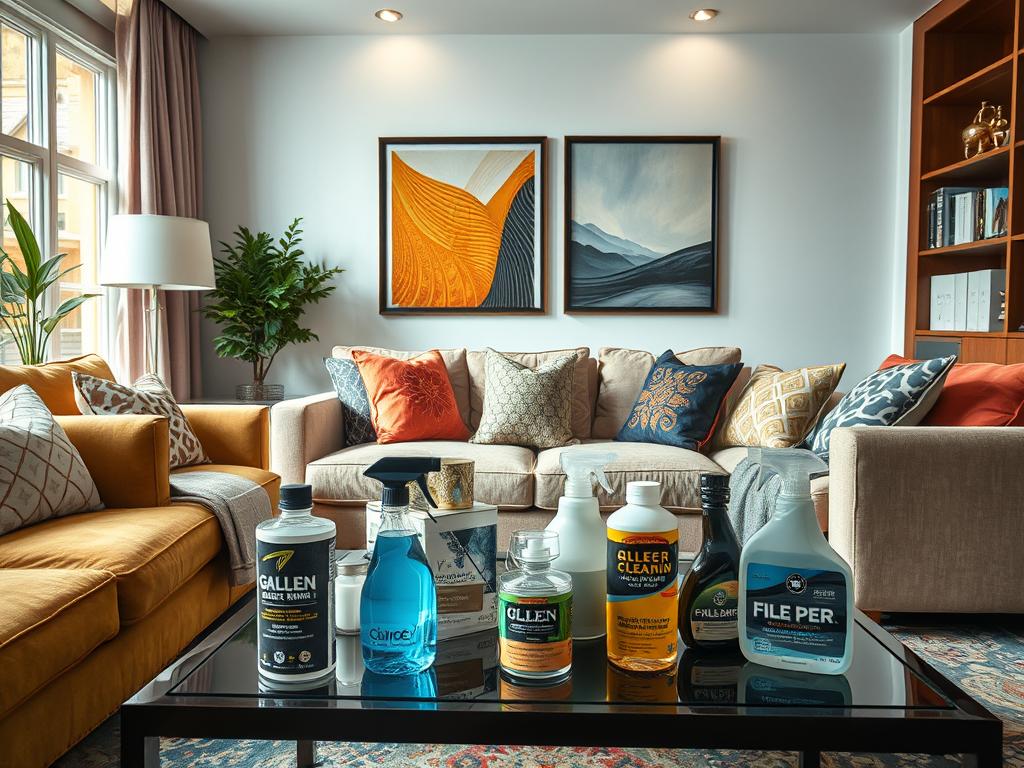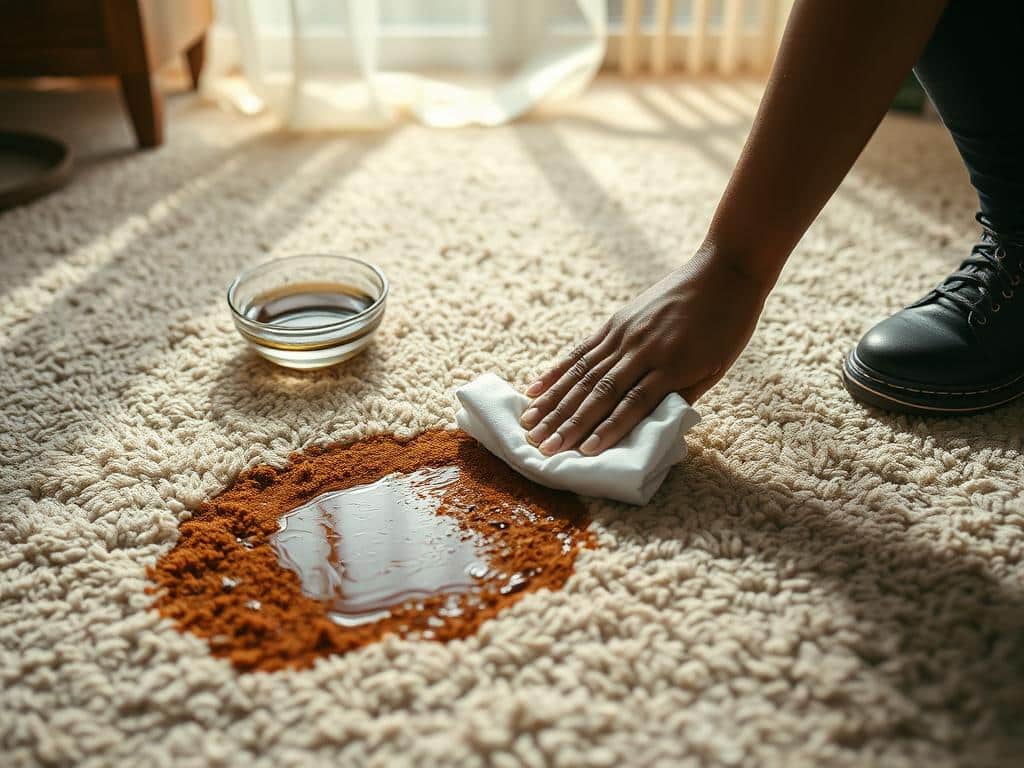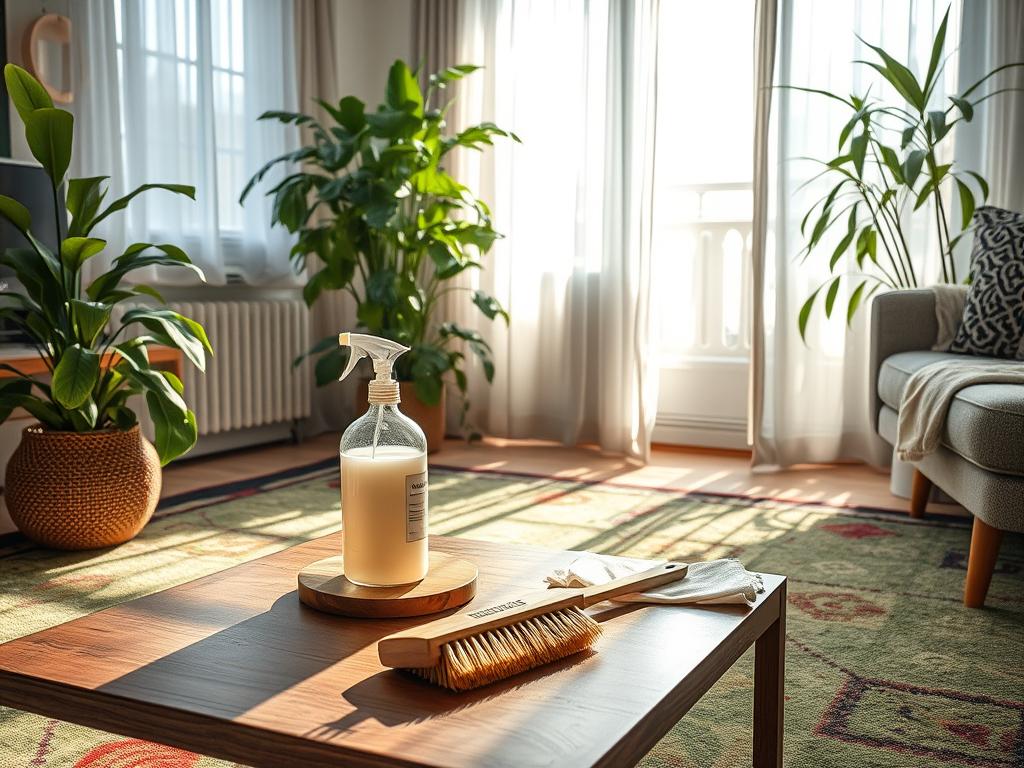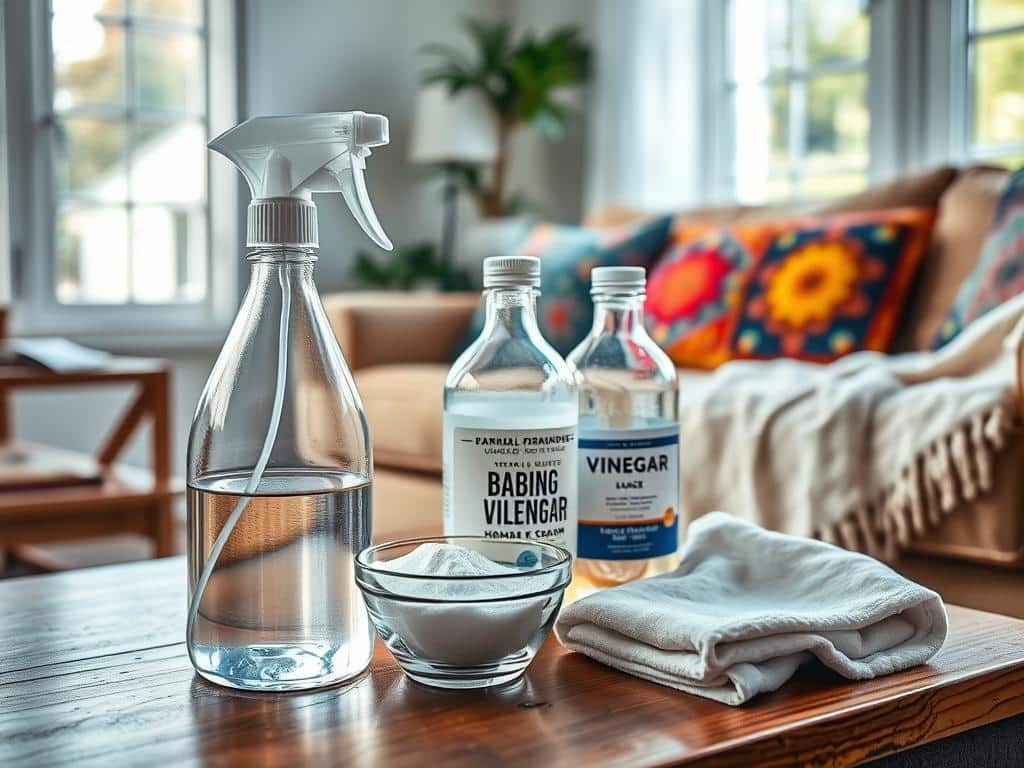
DIY upholstery cleaning keeps your furniture looking new. It’s needed due to daily spills and stains. A homemade cleaner is both cheap and works well. It’s a great way to care for your upholstery.
Key ingredients include white vinegar, baking soda, and natural laundry detergent. These can remove tough stains. They revitalize furniture, like a worn recliner, affected by years of spills and kids’ marks. First, mix water, detergent, and vinegar to create a cleaning solution. Then, scrub it on with a microfiber cloth. For tough stains, apply a baking soda paste. This process can make furniture look nearly new without harsh chemicals.
These cleaning methods can cut indoor allergies caused by dust mites by up to 90%. Start by gathering your materials. You’ll need a bucket, a microfiber cloth, 2 tablespoons of eco-friendly laundry detergent (like ECOS), 2 tablespoons of white vinegar, 2 tablespoons of baking soda, and 2 cups of warm water. Mix everything except the baking soda in a bowl or bucket.
Then, gently rub the mixture into your furniture in circles, soaking the cloth as necessary. Let the furniture air dry. You can repeat this to get the best results. Cleaning your upholstery yourself is a great way to keep your home clean and keep your furniture looking new. Plus, it avoids harsh chemicals and professional cleaning costs.
Don’t forget to vacuum your upholstery well before starting. This lifts dust and dirt, making your cleaning solution work better.
Why DIY Upholstery Cleaning is Important
DIY upholstery cleaning is key for a healthy home. It helps with allergy relief and getting rid of dust mites. These tiny pests love warm, damp spots and eat dead skin. Cleaning your upholstery cuts down their numbers and eases allergy symptoms. This helps the air in your home and makes you feel better.
Another big plus is saving money. Getting a pro to clean your furniture costs a lot, especially if you do it often. By doing it yourself, you keep your home clean without spending as much. Plus, regular cleaning stops dirt and smells from building up. This keeps your furniture in good shape for longer.
DIY cleaning also means you can do it whenever you like. You don’t have to wait for an appointment with a pro. You’re in charge of when and how you clean. For more info on choosing between DIY and professional cleaning, here’s a detailed guide. It helps you decide based on your situation.
So, cleaning your upholstery yourself is wise. It helps with allergies, fights dust mites, keeps furniture looking good, and is cost-effective. Making DIY cleaning part of your routine means a healthier, nicer home. It also protects your furniture investment.
Gathering Your Cleaning Supplies
Start by collecting the right supplies for upholstery cleaning. A well-organized DIY toolkit makes cleaning efficient and effective. You save time and get better results.
Essential Tools and Ingredients
Having the correct tools and ingredients is key. You’ll need a vacuum with hose attachments, microfiber cloths, a soft brush, and a sponge. The vacuum picks up dirt and dust. Microfiber cloths are soft on fabric, preventing damage.
The best cleaning results come from simple ingredients. Use green cleaners like distilled white vinegar, baking soda, and castile soap. These are as effective as chemical cleaners but safer for your family and the environment. They keep your home clean without harmful chemicals.
Using Natural Cleaners
Natural cleaners are good for your health and the Earth. Using products like distilled white vinegar and baking soda keeps your upholstery safe and clean. These ingredients are safe and work well.
Add these eco-friendly solutions to your cleaning routine for a healthy home. With them in your toolkit, you’re ready to tackle any spills or stains. Your furniture will stay looking its best.
Inspecting Fabric Care Tags
It’s key to know how to take care of your upholstered furniture. Look under cushions or at the furniture’s bottom for fabric tags. These tags tell you the right way to clean the fabric. With used furniture sales expected to hit $23.56 billion by 2025, taking care of furniture retains its value.
Understanding Fabric Codes
Knowing your fabric’s cleaning codes prevents cleaning mistakes. Here are the codes you’ll see:
- W – Use water-based cleaning agents.
- S – Use solvent-based cleaning agents.
- WS – You can use either water-based or solvent-based cleaners.
- X – Only vacuum the fabric; no water or solvent should be used.
Different materials like cotton or polyester have unique codes. Understanding them helps avoid fabric damage. It also guides you in choosing a safe cleaner.
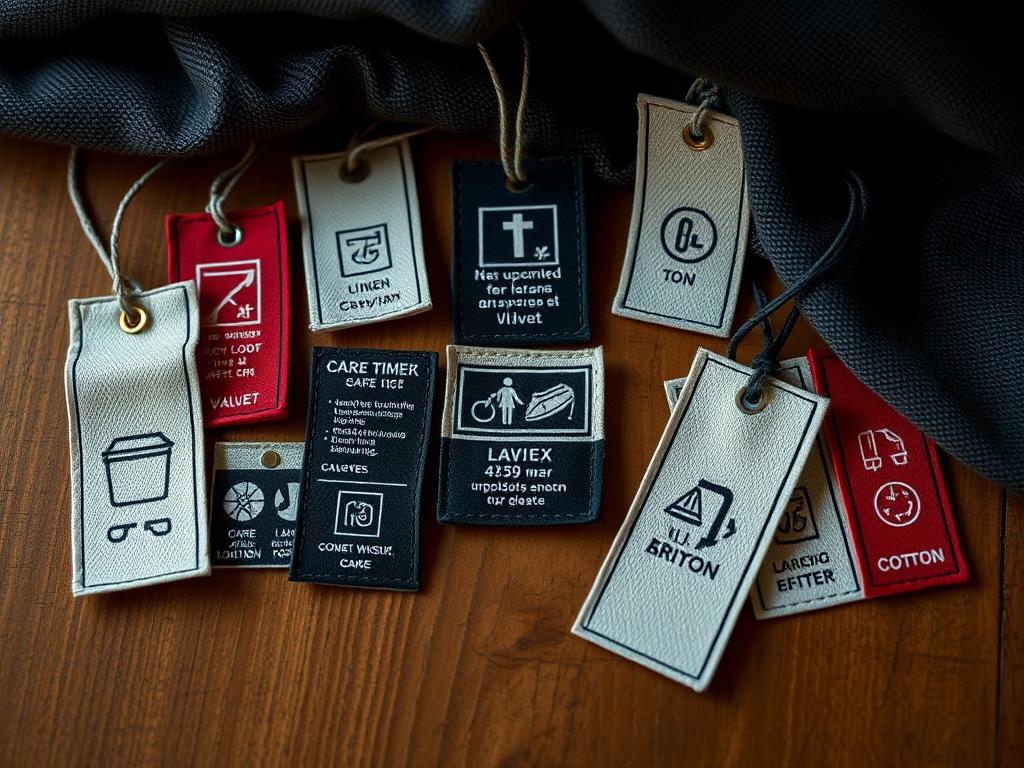
Spot Testing Your Cleaner
Always test a cleaner on a small, hidden fabric area first. This makes sure it won’t harm or change the fabric’s color. Testing on fabrics like polyester ensures safety. Let the test spot dry fully before full application. This step helps prevent issues like discoloration.
Preparing Your Upholstery for Cleaning
Effective DIY upholstery cleaning starts with good preparation. It’s key for getting rid of stains and dirt. First, you need to get your vacuuming skills right. Good vacuuming prevents dirt from getting stuck in fabric fibers. This is important to get your upholstery ready for cleaning.
Vacuuming Thoroughly
Doing a thorough vacuum job is crucial when prepping furniture for a deep clean. Use a hose attachment to vacuum in crevices, under cushions, and along seams. Regular vacuuming takes away surface dust and stops dirt from damaging upholstery fibers. Pay extra attention to spots where debris gathers, like pet hair in couch corners, for a full clean.
Removing Cushions
Taking out cushions is important for a deep clean. It reveals hidden spots where dirt piles up. This makes sure you can clean every part of the upholstery well. By removing cushions, you get to clean each corner and hidden spot. This stops dirt from getting worse during the cleaning.
By following these vacuuming steps and focusing on cushion care, you lay a solid groundwork for cleaning. This prep work is vital for the best results in your DIY upholstery cleaning task.
DIY Upholstery Cleaning Solutions
DIY upholstery cleaning should be easy and effective. After testing 10 homemade and 8 Pinterest cleaners, only a few stood out. Two solutions were both simple to use and really good at cleaning fabric.
Rubbing Alcohol Solution
For tough stains, rubbing alcohol is the best. It works great on paint, ink, and other hard-to-remove stains. Mixed with white vinegar, it becomes a strong spot cleaner that doesn’t need much drying time.
Laundry Detergent Solution
A mix of dish soap, water, and mild detergent works gently yet effectively. Some solutions need a lot of rinses, but getting the mix right means clean fabric without too much soap left behind.
Baking Soda Paste
For tough spots, baking soda paste is top-notch. Mixing baking soda with water makes a strong stain remover. It cuts through grease well, especially on delicate fabric. This paste was the best in our tests.
These DIY cleaning mixes are not only quick and cheap but also handle different stains well. They were the best among our tested solutions. Want to also improve your indoor air? Check out this guide.
Cleaning Different Types of Upholstery
Cleaning your upholstery is more than removing dirt. It’s about knowing the needs of different materials. Items often have care tags marked with codes like W, S, W/S, and X. These show the right cleaning method. It’s crucial to choose the correct cleaners and methods for synthetic fabrics, leather, and faux leather.
Cleaning Synthetic Fabrics
Synthetic materials like polyester and nylon are usually easier to manage. They handle water-based cleaning products well. If the tag says W or W/S, using water-based solutions is safe. A gentle laundry soap mixed with warm water can get rid of dirt and stains.
Vacuum your furniture monthly and deep clean it yearly to extend its life. For spot cleaning, use baking soda to deodorize, and diluted white vinegar to remove odors.
Caring for Leather and Faux Leather
Leather needs special care. Wipe it down regularly to remove dust. Condition it sometimes to keep its natural oils. Use olive oil and white vinegar to clean and nourish it safely.
Faux leather requires similar gentle cleaning solutions. Always test a small area first to avoid damage. For tough stains or if in doubt, it’s best to consult a professional.
To keep your furniture looking great, understand what it needs. Use right the cleaning solutions for each type of material. Regular vacuuming, deep cleaning, and spot treatments help maintain your upholstery’s quality and look.

